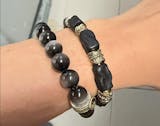Why Chakra Healing Is So Popular and How to Practice It
Introduction
Chakra healing has gained much popularity as people seek more holistic approaches to health and well-being. This practice involves balancing the body’s energy centers, or chakras, to promote harmony in spirit and body. But what exactly is chakra healing, and why has it captivated the attention of so many?

The Rising Popularity of Chakra Healing
The popularity of chakra healing is part of a broader trend toward holistic wellness practices that integrate mind, body, and spirit. In today’s fast-paced world, many people are seeking ways to manage stress, achieve balance, and find deeper meaning in their lives. Chakra healing offers a holistic approach that resonates with these desires. It emphasizes the interconnectedness of physical, emotional, and spiritual health, providing a pathway to overall well-being.
Additionally, chakra healing appeals to those interested in energy work, which is also central to practices like Feng Shui. Feng Shui, the ancient Chinese art of harmonizing the environment, is based on the idea that the flow of energy (or "chi") in a space can influence a person’s health and fortune. Similarly, chakra healing is based on the belief that the flow of energy within the body can impact one’s overall health. Both practices emphasize the importance of energy balance, whether within the environment or within the body, making them complementary to each other.

The Origin and History of Chakra Healing
Chakra healing has its roots in ancient India, particularly in the traditions of Hinduism and Buddhism. The concept of chakras—spinning wheels or centers of energy within the body—first appeared in ancient texts known as the Vedas, dating back to around 1500 BCE. These texts describe the chakras as part of the subtle body, an energetic counterpart to the physical body that plays a crucial role in health and spiritual development.
The chakra system as it is commonly known today was further developed in later texts, such as the Upanishads and the Yoga Sutras of Patanjali. These writings describe the chakras in more detail, outlining their locations along the spine, their associated elements, and their connections to various aspects of physical and emotional well-being.
Chakra healing practices were traditionally part of yoga and meditation disciplines, which aimed to balance these energy centers to promote health, vitality, and spiritual awakening. Over time, these concepts spread beyond India, influencing various spiritual and wellness practices around the world.
In the 20th century, chakra healing gained wider recognition in the West, largely due to the work of spiritual teachers and authors who introduced these concepts to new audiences. The New Age movement of the 1970s and 1980s played a significant role in popularizing chakra healing, as people became more interested in exploring alternative health practices and spiritual growth. Today, chakra healing is a common practice in holistic health communities, often integrated with other healing modalities like Reiki, crystal healing, and aromatherapy.

How to Practice Chakra Healing
Practicing chakra healing can be both simple and profound, offering various techniques to suit different preferences and needs. Here are some common methods:
-
Meditation: Meditation is one of the most effective ways to balance the chakras. By focusing on each chakra, visualizing its associated color, and repeating affirmations, you can help align and clear blockages in these energy centers.
-
Breathwork (Pranayama): Breathwork exercises, particularly those taught in yoga, can help direct energy flow through the chakras. Techniques like deep belly breathing or alternate nostril breathing (Nadi Shodhana) are commonly used to balance the chakras.
-
Energy Healing: Practices like Reiki or acupuncture can directly work on the energy body to balance the chakras. These treatments often involve placing hands or needles on specific points along the body’s energy meridians, similar to how Feng Shui practitioners adjust the flow of energy in a space.
-
Crystals: Specific crystals are believed to resonate with each chakra and can be used during meditation, placed on the body, or worn as jewelry. For example, Amethyst is commonly associated with the crown chakra, while Rose Quartz is linked to the heart chakra.
-
Sound Therapy: Using sound, whether through chanting, singing bowls, or tuning forks, can help to balance the chakras. Each chakra is thought to respond to specific frequencies or sounds, which can be used to harmonize energy.

Conclusion
Chakra healing's growing popularity reflects our collective desire for holistic wellness and balance in an increasingly chaotic world. Rooted in ancient traditions, this practice offers a comprehensive approach to well-being by addressing the interconnectedness of our physical, emotional, and spiritual health. As we seek ways to improve our lives, chakra healing provides a meaningful and accessible path to nurture our inner selves and enhance our overall well-being.Embrace it and you will get more!
Related articles:
The Seven Chakras and Their Meaning in Human Body
What is a Chakra Healing Beaded Bracelet?
How to Wear a Chakra Bracelet on Your Wrist Correctly
How to Use a Chakra Healing Beaded Buddha Charm Bracelet?

























































